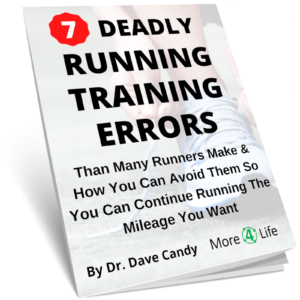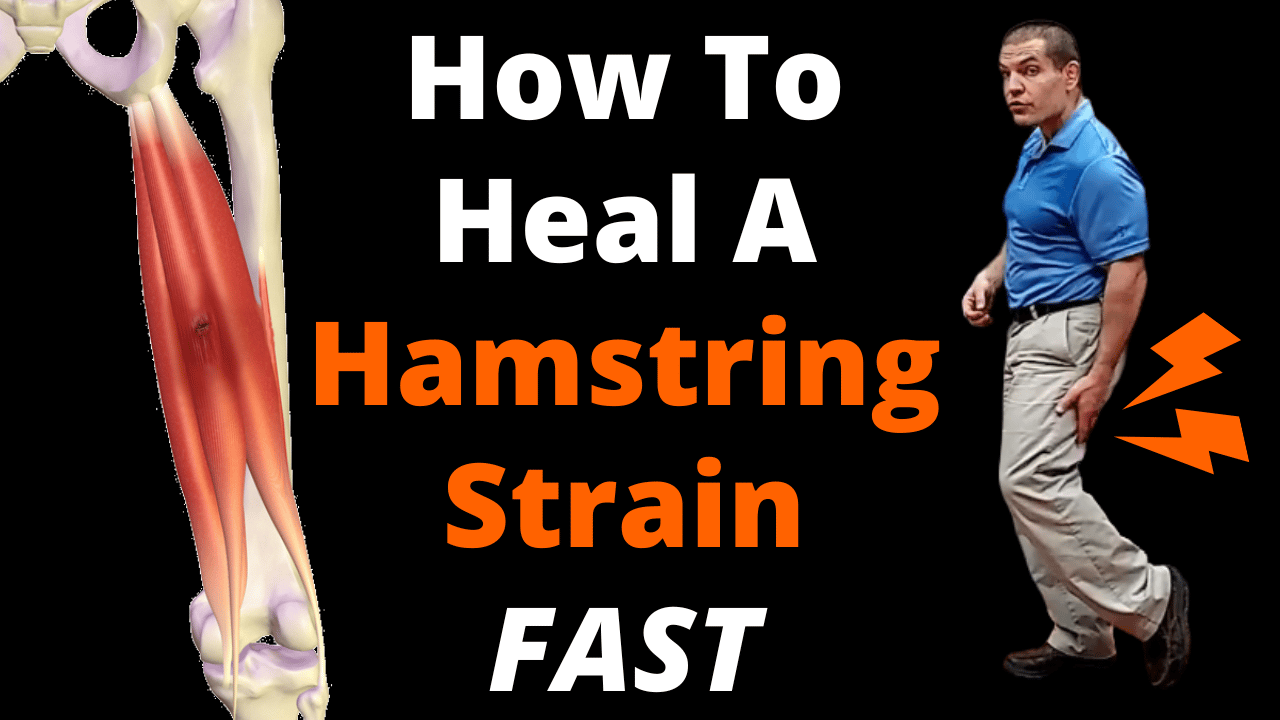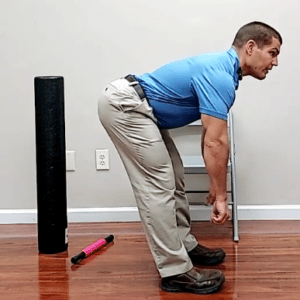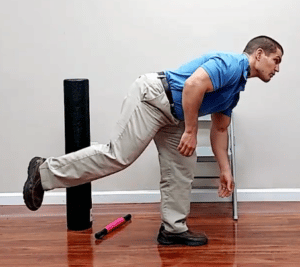If you've recently strained your hamstring, you probably want to get back to activity as quickly as possible. Watch the video to learn how to heal a hamstring strain fast!

The #1 Way To Heal A Hamstring Strain Fast Is NOT To Re-Injure It!
This may sound obvious, but many people with hamstring strains unknowingly do things to re-injure their hamstrings.
Some of these things may include overtraining, pushing through pain, or returning to activity too fast.
However there's one common thing that people may do thinking they're helping their hamstring strain heal, when in reality, it may be making the problem worse.
What Should You Avoid If You Have Hamstring Stain?
You should avoid STRETCHING YOUR HAMSTRINGS
Why?
To understand, you have to understand what a hamstring strain actually is.
What Is A Hamstring Strain?
The word "strain" in an engineering sense means a change in length. That can range anywhere from an overstretched hamstring to a completely ruptured hamstring.
So the reason you DON'T want to stretch a strained hamstring is because the injury is from the muscle being overstretched in the first place.
However, there are various degrees to which the hamstrings can be strained.
Grades Of Hamstring Strains
- Grade 1 - The hamstrings get overstretched, but not torn.
- Grade 2 - a partial tear in the hamstring muscle or tendon
- Grade 3 - a complete rupture of the hamstring
Hamstring Strain vs Pull
The terms "strained hamstring" and "pulled hamstring" can be used somewhat interchangeably.
However, typically a pulled hamstring refers to a milder grade of hamstring strain where the muscle is not torn. (Grade 1)
How Long To Heal A Hamstring Strain?
It depends on the grade of the hamstring strain and the level of activity that you want to get back to.
There's no healing a grade 3 hamstring strain fast. A complete hamstring rupture can take 3-6 months to heal completely.
However, if you have a grade 1 hamstring strain, you CAN heal it fast because there's no true tissue damage. The timeframe for a grade 1 hamstring strain to heal may be days to weeks.
What Causes A Hamstring Strain?
Hamstrings strains can occur in one of 2 ways:
- Rapidly overstretching the hamstring
- Contracting the hamstring forcefully when it's in a stretched or lengthened position.
An example of the first type include slipping and falling on ice. This is usually from a traumatic injury.
An example of the second type include over-striding when running, especially when you're tired.
Although both types of injuries usually happen suddenly, a fall is a single sudden event whereas tearing a hamstring when running usually comes from cumulative micro-injuries over time until one big injury occurs.
Hamstring Strain Exercises
Hamstring strain exercises can be broken down into two different types of exercises: stretching exercises and strengthening exercises.
Stretching Exercises For Hamstring Strain
"But Dr. Candy, I thought you said NOT to stretch a strained hamstring."
That is correct.
But you should stretch some of the other muscles that oppose the hamstrings such as your hip flexors and quadriceps.
Your hamstrings bend your knee and extend your hip. When running or walking, the hip extension movement is the most important.
If your hip flexors are tight, then your hamstrings have to work against more force in order to overcome the tension in your hip flexors.
Therefore, stretching your hip flexors can help you to heal a hamstring strain faster.
How To Stretch Your Hamstrings Safely
If you do a typical hamstring stretch, it stretches the entire muscle. That's not good if you already have a part of the muscle that's overstretched or torn.
However, the hamstrings are a really long muscle.
There are parts of the muscle that may be stiff or under-stretched whereas other parts of the muscle may be overstretched or torn.
In the image above you see "knots" in the muscle fibers shown as trigger points. As compared to the normal muscle fibers in the picture, the trigger points show some areas where the muscle is knotted and shortened. In the area around the trigger points, the muscle fibers are overstretched.
These overstretched areas are where strained or torn hamstrings are likely to occur.
Therefore, in order to take tension off of these over-stretched areas, you need to release the trigger points AROUND the injured area.
Treatment For Trigger Points In Strained Hamstrings
As shown in the video above, you can used self-treatment devices such as muscle massage sticks or foam rollers.
Auto Amazon Links: No products found. (1 items filtered out)

IMPORTANT! Don't roll on the areas of the hamstring that are strained. Roll on the non-painful areas.
In addition, there are some physical therapy treatments for trigger points that may help you heal from a hamstring faster. These include:
Need Treatment For A Hamstring Strain?
Request an appointment with one of our specialists.
Strengthening Exercises For Hamstring Strain
If you've torn your hamstrings, you don't want to do strengthening exercises right away.
Doing heavy resistance exercises for your hamstringngs can further tear the muscle if it's already torn.
Glute Strengthening Exercises For Hamstring Strain
However, you DO want to strengthen your glutes (butt muscles).
Your glutes and hamstrings work together to extend your hip (move your leg backwards) as walk or run.
If your glutes are weak, you may be at a higher risk of straining your hamstrings due to overusing them. This is particularly common when sprinting at the end of a race after your glutes are already tired.
Glute strengthening exercises may include non-weightbearing exercises like bird dogs initially.
Glute and Hamstring Strengthening Exercises
However, more functional exercises include weightbearing exercises that strengthen the glutes and hamstrings at the same time.
Examples of these include squats, lunges, and deadlifts.
When doing these exercises, start out with bodyweight only, and then slowly progress weight.
Additionally, you can progress from squats and deadlifts on two legs to one leg as your hamstrings heal.
Single-leg deadlifts help with both hamstring strength as well as with balance.
Running With Hamstring Strain
If you want to get back to running, you need a good strategy to do so safely.
Start Low and Go Slow
First of all, you want to go back to running slowly after a hamstring strain.
Start with short distance, initially as low as 1/4 of a mile. Then slowly progress your running speed and distance over time.
Resist the temptation to increase your mileage too quickly, even if you're not having any pain.
Again, you don't want to re-injure your hamstring and have to start the healing process all over again.
Use Proper Technique When Running
As previously mentioned, if you over-stride or overuse your hamstrings when running, you may be at risk for straining your hamstring again.
If you need help to get back to running after a hamstring strain, tap the button below to request a Running Evaluation with one of our specialists.
Like this post? Check out some of our other posts about running injuries including:
Why Do My Calves Hurt When I Run?
How To Stop Foot Pain When Running






